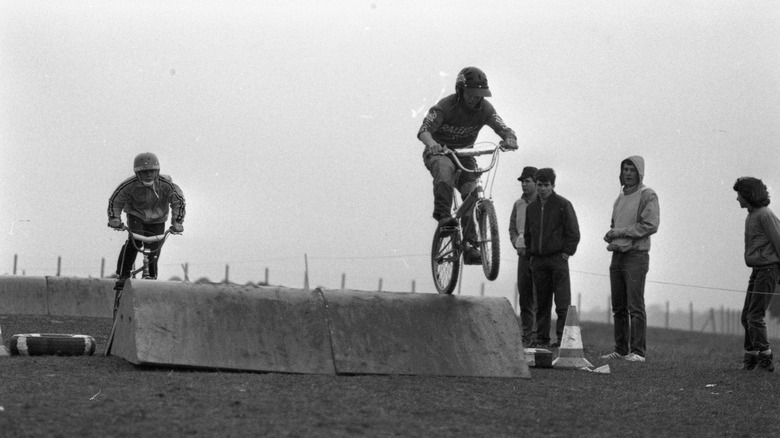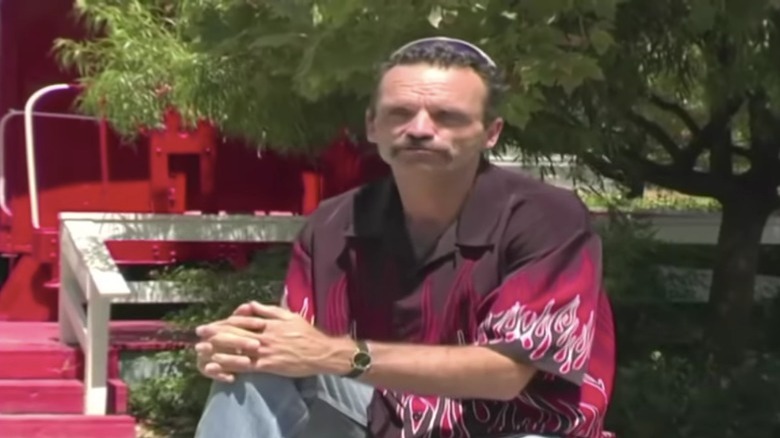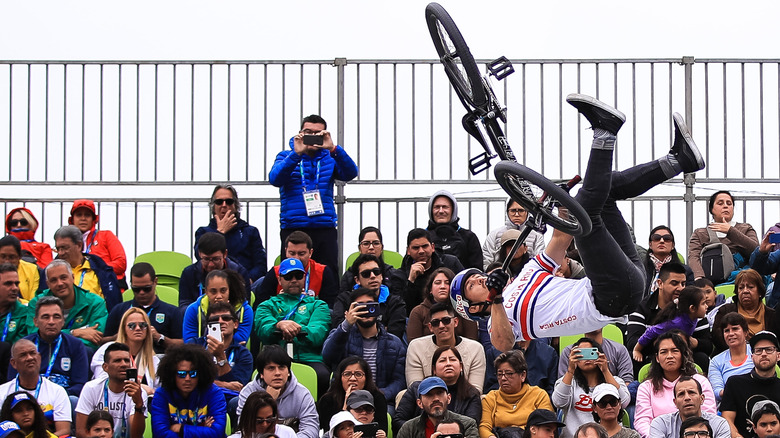What Does BMX Stand For And When Did It Start?
A BMX bike is a common gift for kids all over the United States, and most people know what one is. BMXs are notably smaller than mountain bikes, road bikes, and racers, and are easily customizable making them a great source of fun.
But not everyone knows that BMX stands for "bicycle motocross," and as well as the bike itself, the name also refers to a sport that emerged among American kids in the early 1970s. Hugely influenced by motocross racing, which takes place using motorcycles specifically designed for off-road and dirt track racing, BMX flourished into a craze throughout the decade, and, later, became a sport in its own right. Or rather, two sports: BMX racing and BMX freestyle, both of which now feature every four years as regular competitive events at the Olympic Games, a stunning turn of events for a sport created by children and which cements BMX as a truly worldwide phenomenon.
A 1970s innovation
So how exactly did BMX racing come about? Though some BMX outlets note that offroad cycle races had been taking place using regular bicycle designs as early as the 1950s, BMX as we know it today is usually said to have begun in California, where in the early 1970s kids had become transfixed by the high-octane spectacle of motocross racing. The sport had just been brought to America and was taking the country by storm with hundreds of races taking place and attracting huge crowds.
The racers involved — many of whom were established European racers who had been brought to the U.S. by racing promoters — became heroes for countless American kids who had been taken to the races by their parents. And of course, these same kids would then attempt to imitate the racing feats of their idols on their own bicycles when playing in the street with friends.
Sports historians have identified one movie in particular as being fundamental in kicking off the BMX craze in the 1970s: "On Any Sunday," released in 1971. The movie focuses on motocross racing, yet opens with iconic footage of children riding their bikes off-road, in emulation of their racing heroes. The footage showed what was already a craze in California, and helped BMX racing spread among kids all across America upon its release. And with so many kids taking up the same unofficial hobby, it didn't take long for it to become an established sport with the help of some forward-thinking enthusiasts.
Scot Breithaupt
One of the major figures in the creation of BMX as a sport, its promotion, and its growth across the globe is Scot Breithaupt, an entrepreneurial and innovative sports fan who saw the potential of BMX from its earliest emergence. Breithaupt, who died in 2015 at the age of 57, is widely considered the father of BMX as it is known today. As several obituaries noted, Breithaupt was instrumental in starting the BMX racing boom which later saw it established as an Olympic sport.
In 1970, he made the first steps toward making BMX racing an official sport by holding races on a specially designed track in Long Beach, California, which he built in a vacant lot, per the Desert Sun. He was just 13 years old at the time. And his accomplishments didn't stop there. As well as being a champion BMX racer in his own right, Breithaupt became the new sport's ultimate evangelist, working with others to create new racing BMX designs, form racing teams, and organize competitions. He was a champion BMX racer himself, winning the NBA National #1 plate in 1976, per DigBMX.
The rise of freestyle BMX
Though BMX racing originally evolved as an imitation of motocross racing, the development of BMX-style bicycles and their customization led to unexpected innovations. In particular, the small and more agile models allowed riders to begin expressing themselves in new ways through tricks and stunts, which became an art form themselves. The result was freestyle BMX, which developed shortly after the emergence of BMX racing in the mid-1970s and continued to grow in popularity well into the late 1980s.
Freestyle BMX is typically broken down into five distinct disciplines: street, park, vert, trails, and flatland, depending on the landscape and obstacles the rider is attempting to negotiate and perform in. Vert, for example, takes place in a skate park halfpipe.
In 2017, it was announced that BMX freestyle park, a skate park-based discipline with numerous obstacles, would feature in the 2020 Olympic Games in Tokyo for the first time. It's also slated to be part of the 2024 Olympics games in Paris.



